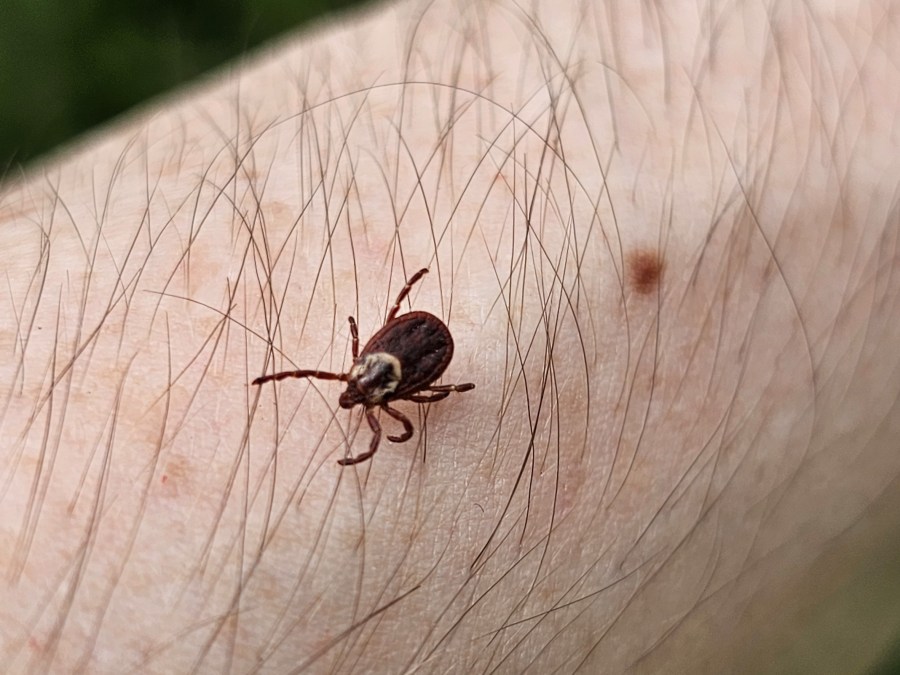CLARKSBURG, W.Va. (WBOY) — There’s a tick-look-alike emerging in north central West Virginia.
Yellow poplar weevils are “back in full force,” according to the West Virginia Department of Agriculture (WVDA), but unlike their disease-spreading twin, they are harmless to humans.

Yellow poplar weevils are native to West Virginia and emerge as adults in mid-June. The WVDA said that they are all over the north central and western parts of West Virginia right now, but they aren’t really concerning. Their grubs frequently cause spots called blotch mines on leaves, which don’t look the prettiest, but they do not normally cause permanent tree damage. They are completely harmless to humans, according to the WVDA.
Ticks, on the other hand, can spread tick-borne illnesses. The deer tick, the only tick in West Virginia that spreads Lyme disease, has a similar look to yellow poplar weevils, but there are a few distinguishing features.
Both are about 1/8-inch long, like yellow poplar weevils, male ticks appear almost all black. However, where weevils are a kind of beetle, making them an insect with six legs, ticks are arachnids and have eight legs. Ticks also appear almost flat whereas weevils look rounded.


Adults yellow poplar weevils are normally only seen in West Virginia during late June and July, according to the WVU Extension, compared to deer ticks which are out in West Virginia from late spring until early fall.
If you are bitten by a tick, the CDC recommends pulling it off with tweezers. If the tick was infected with Lyme disease, the bitten person will likely not have symptoms for 30 days.

























